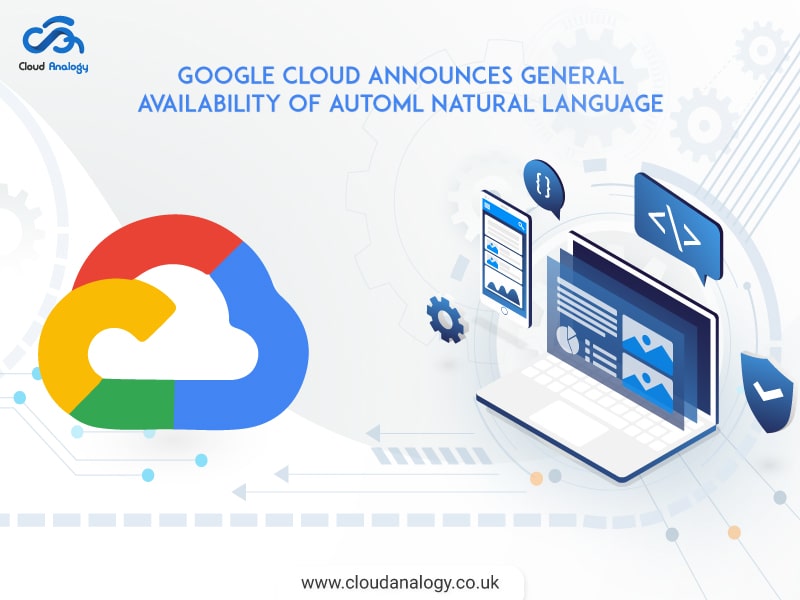Google Cloud has announced the general availability of the AutoML Natural Language framework. AutoML Natural Language supports features for data processing and gaining engaging insights from textual data. It also supports common machine learning tasks such as classification, sentiment analysis, and entity extraction.
With AutoML Natural Language, you can easily create and deploy custom machine learning models that analyze documents, identify topics, and evaluate settings within them.
It is used in various types of applications like:
- Categorize digital content (such as news, blogs, or tweets) in real-time.
- Identify sentiment in customer feedback comments.
- Data mining of unstructured scanned data into classified and searchable content.
AutoML Natural Language operates with a wide range of such as article collections, scanned PDF files, and archived notes.
This tool works in three steps:
Uploading documents: Firstly, you upload documents through the AutoML Natural Language user interface and label text data using your domain-specific keywords and phrases.
Training the custom model: The tool then performs the machine learning tasks to classify, extract, and detect sentiment.
Evaluate the model: The final step involves getting data-driven insights that meet the specific needs of users.
AutoML Natural Language also supports analysis of PDF documents, including natural PDF and scanned PDF images. AutoML Natural Language supports 5,000 classification labels and trains up to a million documents and document sizes up to 10MB to help you understand legal documents or classify complex content taxonomies.
AutoML Natural Language also has several advanced features to help you better understand your document. AutoML Text & Document Entity Extraction contains the spatial structure and layout information of a document for model training and prediction. This leads to a better understanding of the entire document and is very helpful if the text and location on the page are important, e.g. invoices, receipts, resumes, and contracts.
AutoML Natural Language can train custom models for four different tasks called model objectives:
Single label classification classifies documents by giving them labels.
Multi-label classification allows multiple labels to be assigned to one document.
Entity extraction identifies entities in documents.
Sentiment analysis analyzes attitudes in documents.
It can extract information about people, places, and events both from text and documents uploaded and pasted on Google Cloud Storage, and allows users to train their own custom AI models to classify, recognize, and understand things like sentiment, entities, content, and syntax. It also provides custom entity extraction, that can be used to identify domain-specific entities in documents that are not included in the standard language model.
Akshay Dhiman
Chief Technical Officer (CTO)
“Akshay Dhiman, the CTO of Cloud Analogy, has been a standout and successful Salesforce Platform Developer for years. He has a rich experience in Salesforce Integration, JavaScript, APEX, VisualForce, Force.com Sites, Batch Processing, Lightning, PHP, C++, Java, NodeJs, ReactJs, Angular 8, GraphQL, React Native, Web Technology, and jQuery. Known for his problem-solving and debugging skills, Akshay is an out-of-the-box thinker and his capability to understand the business context and translate it into a working model is par excellence. Akshay would not only translate his thoughts into reality but would also bring in his own perspective that is always a tremendous value add. Akshay has the knack of taking challenges head on, equipped with In-depth industry knowledge, Resourcefulness and uncanny nag to build relationship with anyone in shortest time possible. Not only does he possesses fantastic technical depth and awareness but Akshay also complements them with a profound understanding of business functionalities, tools, and methodologies. He has the rare combination of skills and talent that one looks for in Salesforce – attention to detail and the drive for innovation.”





